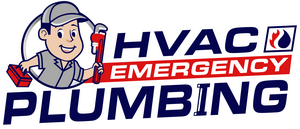
|
Answer: Hydro jetting is a method used to clean and clear sewer lines by using high-pressure water streams. It involves inserting a specialized nozzle into the pipe, which releases pressurized water to remove blockages and debris. |
|
Answer: Hydro jetting is recommended when other methods, such as snaking or chemical drain cleaners, fail to resolve persistent clogs or blockages. It is effective for clearing tree root infiltration, grease buildup, mineral deposits, or accumulated debris in sewer lines. |
|
Answer: Hydro jetting is generally safe for most types of plumbing pipes, including PVC, cast iron, and galvanized steel. However, older or damaged pipes may be more vulnerable to the high-pressure water, so it's important to consult with a professional plumber to assess the condition of your pipes before hydro jetting. |
|
Answer: The duration of hydro jetting can vary depending on the length and condition of the sewer line. In general, it can take anywhere from 30 minutes to a few hours to complete the process. Factors such as blockage severity and accessibility may also impact the timeframe. |
|
Answer: When performed by a trained professional, hydro jetting should not cause damage to properly installed and maintained sewer lines. However, if the pipes are old, corroded, or weakened, there is a slight risk of damage. It is important to hire a reputable plumber with experience in hydro jetting. |
|
Answer: The frequency of hydro jetting depends on various factors, including the age of your plumbing system, the frequency of clogs or blockages, and the condition of your sewer lines. Generally, it may be recommended every 1-5 years as a preventive measure or as needed. |
|
Answer: Hydro jetting can effectively remove tree roots from sewer lines; however, it may not provide a permanent solution. Root growth may continue over time, especially if the pipes are cracked or damaged. Regular maintenance and root intrusion prevention methods may be required. |
|
Answer: A sump pump is a device used to remove water that has accumulated in a basement or low-lying area. It typically sits in a sump pit or basin and activates automatically when water reaches a certain level, pumping the water out and away from the building. |
|
Answer: Sump pumps are commonly used in areas prone to flooding or excessive groundwater. They help prevent water damage to basements and crawl spaces by effectively draining water away before it can cause harm. |
|
Answer: A sump pump is typically powered by electricity. When water reaches a predetermined level in the sump pit, a float switch activates the pump. The pump then pumps the water through a discharge pipe or hose, directing it away from the building's foundation. |
|
Answer: It is recommended to check your sump pump at least twice a year. Test its functionality by pouring water into the pit to ensure the pump activates and drains properly. Inspect the pump for any signs of damage or wear. It is best to perform these checks before the rainy season. |
|
Answer: Regular sump pump maintenance includes clearing debris from the pit, testing the pump's operation, checking the discharge pipe for clogs, and ensuring the float switch moves freely. It is also important to inspect the pump's power source and verify that the backup battery (if applicable) is functioning. |
|
Answer: A sump pump connected to the main power supply will not operate during a power outage. However, you can install a battery backup system or a water-powered backup pump to ensure the pump continues to function when the power is out. |
|
Answer: The lifespan of a sump pump can vary depending on factors such as its quality, usage, and maintenance. Generally, sump pumps can last around 10 years, but routine maintenance, regular checks, and timely replacements can help ensure their longevity. |

